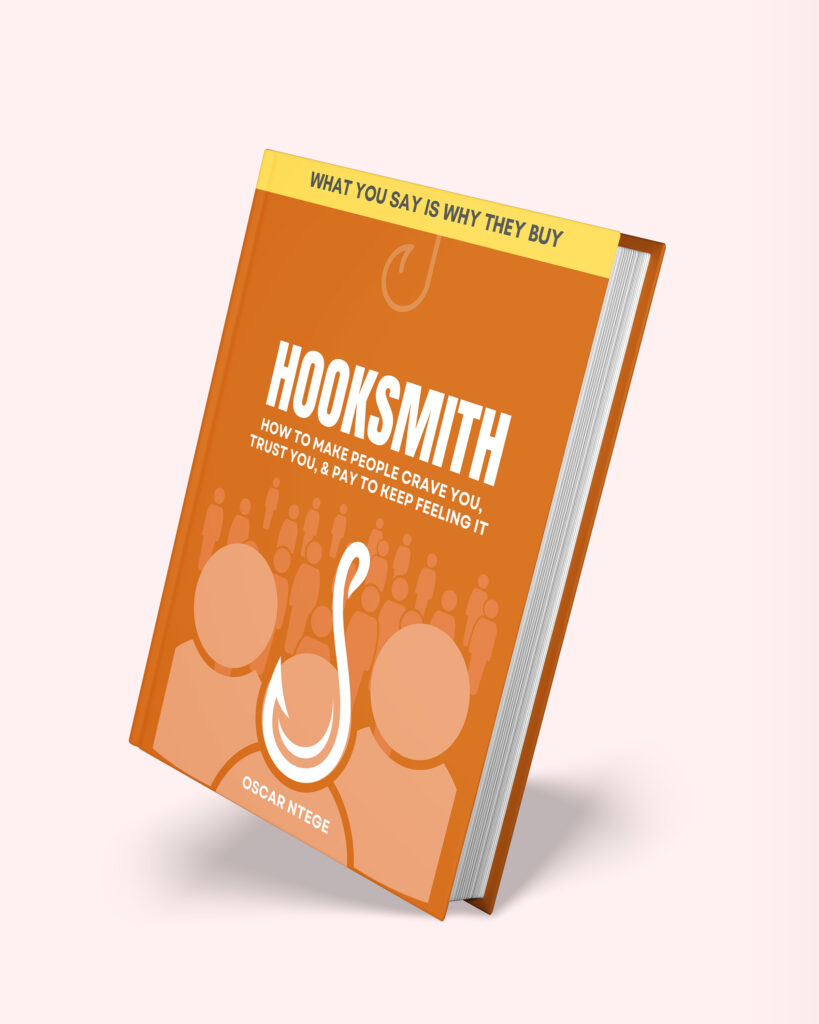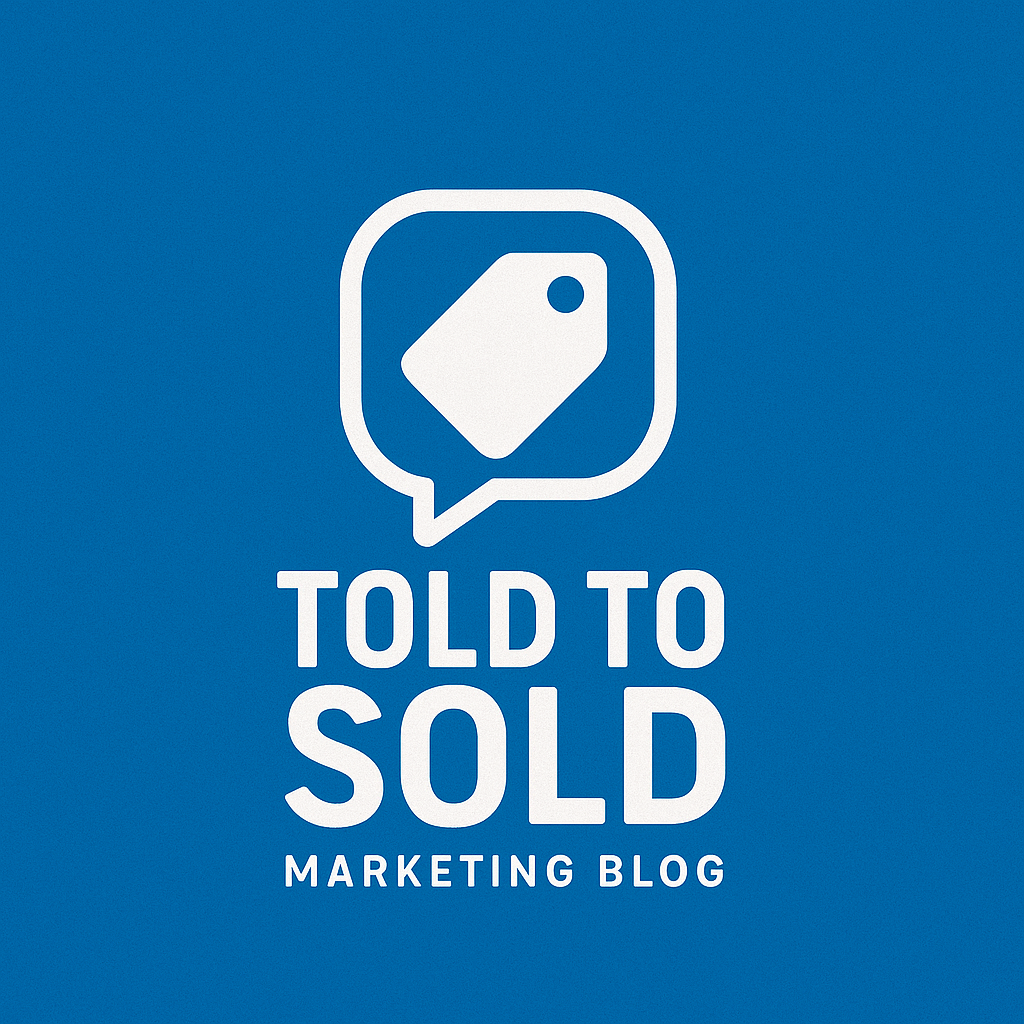You pour your heart into your work late nights, perfecting every detail and expect that hard work to speak for itself. Surely clients will beat down your door when they see your results, right? I thought so too. I had a portfolio full of impressive projects and a work ethic to match, but the inquiries weren’t coming. Prospects would nod at my accomplishments yet move on to someone else. Something was missing.
Then one day, out of desperation, I shared a different kind of post. Instead of just showcasing the finished project, I told the story behind it the challenges I overcame, the “why” driving me, and the impact on the client’s life. That Instagram caption was essentially a mini-story of blood, sweat, and insight.
To my surprise, it blew up. It got more comments and shares than any polished portfolio piece I’d posted. Even better, a handful of new client inquiries landed in my inbox that week. That’s when it clicked for me: people weren’t moved by what I did; they were moved by how it made them feel.
In this post, we’ll explore why story selling is more effective than simply flaunting hard work or results. You’ll see how shifting from “look what I did” to “here’s how it felt” can transform how clients perceive you. Let’s dive into how storytelling in selling can hook your audience emotionally, build trust before you even speak, and ultimately win you more business.
Why Hard Work Alone Doesn’t Land Clients

Don’t get me wrong hard work and great results are important. But just working hard or even showcasing those results isn’t enough on its own to win clients. Why? Because facts and figures alone don’t stick. They don’t create an emotional connection. And without that connection, your impressive results might just get a polite nod and be forgotten moments later.
People are not purely rational robots ticking off checkboxes; we’re human beings driven largely by feelings and impressions.
When you lead with only the logical proof of your work (“I increased ROI by 50%” or “I worked 100 hours on this project”), you’re missing the chance to make your audience care. As marketing guru Seth Godin reminds us, you’re offering a new emotional state, not just a widget. In other words, people don’t buy what you do they buy how it makes them feel. Your hard work might be amazing, but if it doesn’t make your prospective client feel something excitement, hope, trust, confidence they’ll move on to someone who does.
Think about it: a dozen other creatives or entrepreneurs out there have great work ethics and solid results too. Simply being good isn’t a differentiator. But your personal story, your passion, and the meaning behind your work are unique. When you communicate those, you stop being just another service provider and start becoming a brand with which clients connect.
What Is Story Selling (And Why It Works)
Story selling is essentially the art of using storytelling techniques in marketing and sales to engage emotions and drive action. It’s about selling through narrative instead of just listing facts. Story selling connects customers with your product or service on a deeper level by wrapping your message in a relatable tale. Rather than saying “Here’s what I do and here are the results,” you say, “Here’s the journey, the struggle, the triumph and here’s how you can be part of a similar story.”
Why is story selling so powerful? Here are a few key reasons:
- Stories evoke emotion and make you memorable. When you tell a story, you engage the part of the brain that feels and remembers. Research shows that hearing a story triggers the release of specific neurochemicals: cortisol (for memory), dopamine (for emotional response), and oxytocin (for connection and trust).
No wonder we remember stories far better than raw facts. In fact, studies found that facts are 22 times more likely to be remembered when wrapped in a story! That means if you want a potential client to recall you among all the others, tell a memorable story. People might forget your exact credentials, but they’ll remember the feeling your story gave them. - Stories shape perception and value. A story can literally make what you offer seem more valuable. In one consumer study, participants were shown products with either a plain description or a rich story, and the results were stunning: items paired with a story were perceived as worth more. For example, a painting accompanied by the artist’s personal story was seen as 11% more valuable than the same painting with just a label.
Even a bottle of wine got a boost when shoppers read the winemaker’s story, they were willing to pay 6% more for it. Perhaps most amazing, a trivial item like a pair of spoons fetched 64% higher bids on eBay when paired with a fictional story versus a basic description. The takeaway? Stories influence how people perceive your work’s worth. By sharing the “why” and emotion behind what you do, you elevate its perceived value in your client’s eyes (without changing anything about the work itself). - Stories build trust and human connection. Telling your story (or your clients’ stories) makes your audience feel like they know you. It shows there’s a real human behind the business, someone who has passion and purpose. Stories tap into empathy your listener starts to identify with the hero (maybe that’s you or maybe it’s a past client in your story), and they begin to trust that you understand them.
As one report put it, “Stories move people and reach them on a deep emotional level,” which is crucial for building brand preference and loyalty. By the time a prospect finishes reading or hearing your story, they’ve felt something genuine. That emotional experience can create trust before any sales conversation begins. In contrast, a list of achievements or features doesn’t foster a personal connection. Story selling makes your brand relatable and trustworthy, warming up cold leads into fans who feel like they already know you. - Stories inspire action. Ultimately, the goal is to get the client to take action (whether it’s contacting you, signing up, or purchasing). Stories excel at this because they engage both the heart and the mind. Marketing data backs it up: on average, story-driven marketing content leads to about a 30% higher conversion rate than non-story content.
Why? Because when people feel emotionally invested, they’re more likely to take the next step. A story can paint a picture of a better future or a solved problem that the client craves, prompting them to act. It’s the difference between “Here’s a service, it has XYZ features” versus “Imagine how you’ll feel when… [insert desirable outcome].” The latter lights a fire under the buyer. Remember: people may forget a statistic, but they won’t forget how your story made them feel motivated or understood.
Story Selling in Action: Real-World Examples
It’s clear that story selling has psychological and financial benefits but what does it look like in practice? Let’s look at how creative professionals, brands, and entrepreneurs use storytelling to drive engagement and conversions:
- Creators on Instagram using personal stories: Ever notice how some social media creators write long, compelling captions that read like mini-stories? Those aren’t just for entertainment they’re strategic. Consider the popular project Humans of New York on Instagram, which pairs portraits with emotional, real-life stories. Each post captures thousands of comments and shares because the storytelling strikes a chord.
People feel connected to the content on a human level. Now, think of a photographer or designer on Instagram: instead of only posting a polished portfolio piece with a generic caption, they share the story behind the work. Maybe it’s the tale of a creative block they overcame or a meaningful client transformation.
These narrative captions often get higher engagement and lead to inquiries like “I felt so moved by your story can we work together?” The lesson: by telling a relatable story in your social posts, you’re not just showcasing a product or service, you’re showcasing why it matters, and clients respond to that. - Brand narratives that sell a lifestyle: The most iconic brands in the world don’t sell products; they sell stories and lifestyles. Nike, for example, rarely just lists the features of their shoes. Instead, Nike commercials and campaigns tell stories of underdog athletes overcoming odds, or everyday people pushing their limits. By the end of a Nike ad, you’re not thinking about shoe cushioning technology you’re feeling inspired, empowered, maybe even a bit heroic. Nike has effectively made you the hero of their story (with the villain being whatever challenge you face).
That emotional high makes you more likely to buy the shoes, because they represent that feeling of victory. Another example: TOMS Shoes built its entire brand on a story. When you bought a pair of TOMS, you weren’t just buying footwear; you were buying into the story of a child somewhere who’d get a pair of shoes because of you. That narrative of giving back made customers feel part of a meaningful mission, which in turn drove sales and a devoted community. These brands show that when you infuse a bigger story or purpose into what you’re selling, you’re no longer competing on product specs you’re offering an emotional experience. - Entrepreneurs and coaches sharing personal journeys: In the world of service businesses and coaching, story selling is often the secret sauce to client acquisition. Successful course creators, consultants, and coaches frequently share the personal story of how they got where they are including the failures, the turning points, the “aha” moments.
Why? Because it resonates. If you’re a fitness coach who once struggled with your weight, telling the story of your 100-pound weight loss and how it changed your life will inspire potential clients far more than just saying “I can help you lose weight.” They see proof through your journey and they feel hope for themselves.
Or imagine a freelance marketer who openly writes about a campaign that bombed and what they learned from it. That vulnerability and storytelling can paradoxically attract clients, because it demonstrates experience, authenticity, and confidence. One entrepreneur I know had little luck cold-selling her graphic design services.
Then she wrote a LinkedIn article about why she became a designer harkening back to childhood doodles and a vision to help small businesses tell their story visually. That post went semi-viral, and guess what? She started getting messages from business owners who resonated with her passion and wanted her for her story, not just her Photoshop skills. The emotional connection paved the way for a business connection.
These examples all boil down to a simple truth: stories engage and convert. Whether you’re a solo creative or a big brand, weaving narrative into your marketing creates an emotional bridge between you and your audience. By the time you present your “ask” (hire me, buy this, etc.), your audience isn’t just evaluating a cold proposition they’re already invested in the story and, by extension, in you.
Start Selling with Story
Here’s the bottom line: if you’ve been relying on hard work and good results to do the talking, it’s time to flip the script. Your work ethic and results aren’t going away you’re just packaging them in a way that actually gets heard and remembered. In a world where people are bombarded with 6,000+ marketing messages a day, story selling is your chance to stand out and be the one they remember and trust.
So how can you start story selling? Begin with your own experiences. What journey led you to do the work you do? What obstacles have you overcome that your clients might relate to? Share that. Or share your clients’ success stories in narrative form (with permission, of course) – position them as the hero and show how their transformation happened.
Even in everyday content like an Instagram post or a sales page, frame it like a story: set the stage, introduce a challenge, show a breakthrough, and invite your audience into the resolution. Speak to the emotions and aspirations behind the problem you solve. Remember, people don’t buy the service, they buy the feeling of relief, joy, or success that comes from the outcome of that service.
As you infuse more story into your marketing, you’ll notice a shift. Prospective clients will start responding with phrases like “I feel like you really get where I’m coming from” or “Your story inspired me…”. That’s your cue that you’ve made that coveted emotional connection. Trust and credibility build naturally when someone feels understood. By the time they hop on a call or hit “add to cart,” they’re often already sold on you because your story did the groundwork.
Lastly, don’t be afraid to be personal and genuine. Story selling isn’t about inventing a fairy tale or pitching a gimmick – it’s about highlighting the real, human side of your business. Authenticity is your greatest asset. Even if you’re marketing B2B services in a “serious” industry, remember that the decision-makers are human too. A compelling story will resonate with them far more than a jargon-filled slide deck.
Make Your Story Your Strategy
Starting today, think of one aspect of your business or personal journey that you can share as a story this week. Maybe it’s a lesson learned, a challenge overcome, or a mission that drives you. Draft it, share it on your platform of choice, and watch how your audience reacts. You’ll likely be pleasantly surprised at the engagement and leads that a heartfelt narrative can generate.
If you’re ready to dive deeper into mastering the art of story selling – to really hook your audience’s attention and emotion – I recommend grabbing a copy of Hooksmith by Oscar Ntege. It’s a highly practical guide to creating content that people crave, trust, and act on. Hooksmith is essentially a playbook on crafting hooks and stories that make your brand unforgettable. (You can find it on Amazon here:

Remember: Hard work produces the results, but story sells the results. Your story is your superpower. Use it well, and you won’t just get clients – you’ll earn passionate, loyal clients who stick around for your brand’s whole journey. Now go out there and tell your next great story. Your future clients are waiting to hear it!
